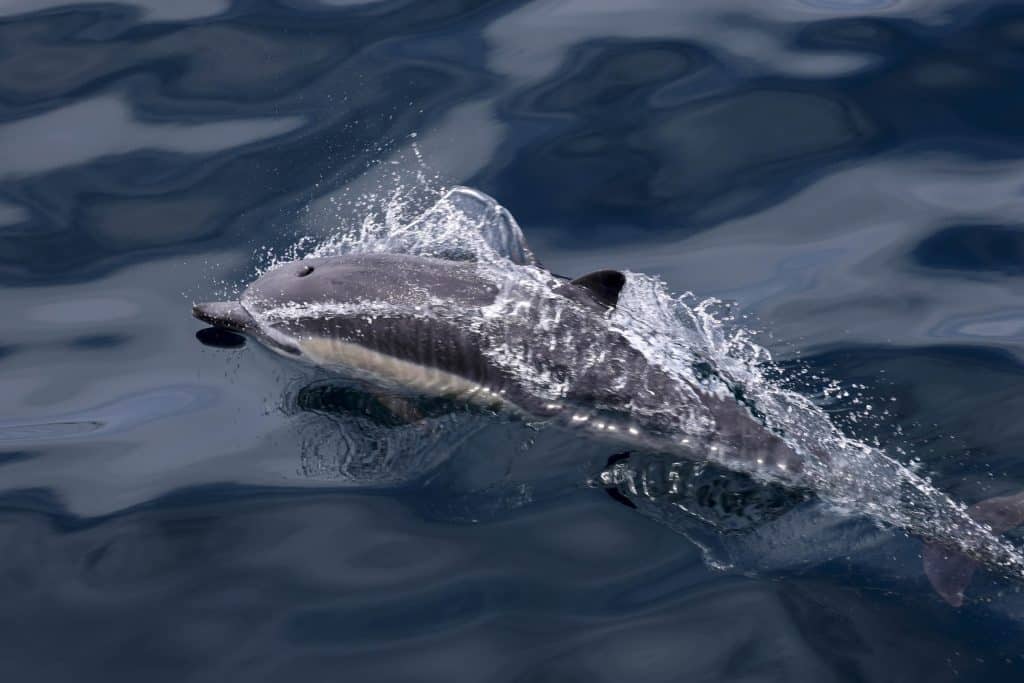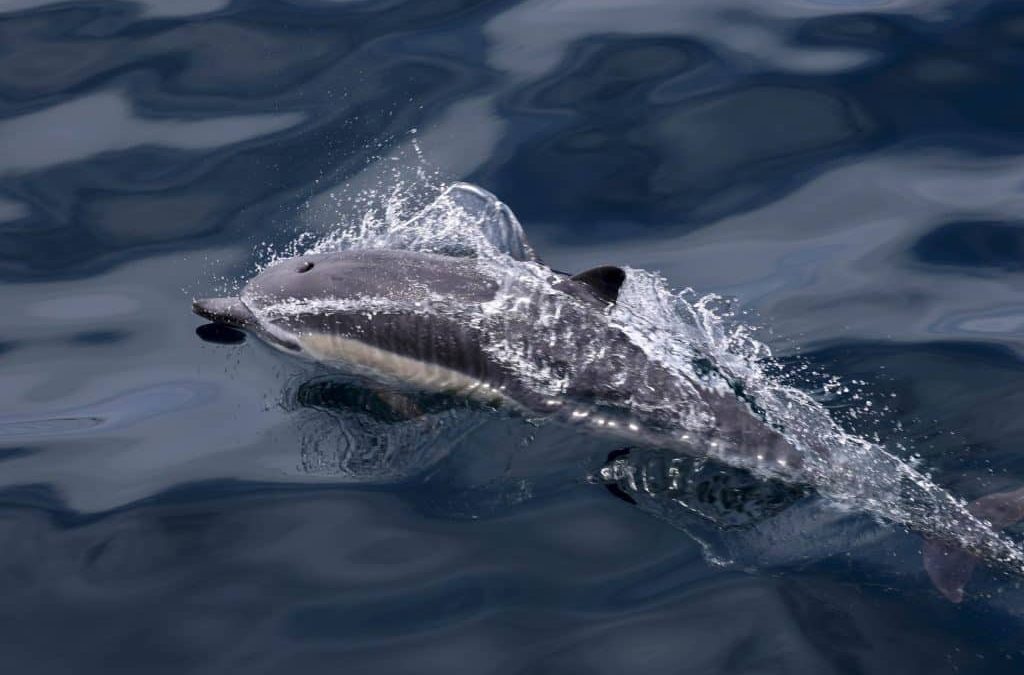Thursday 10 July 2025
While waiting on the walkway beyond the ticket booth, many of the San Diego Whale Watch passengers-to-be saw the round stingray swim by the rip rap shoreline. Everyone saw the bright orange Garibaldi, the California State Marine Fish, that has a unique parenting role where the male fiercely defends—territoriality—and prepares the nest for eggs. Their presence is an indicator of the health of the rocky rip rap artificial reefs. They are highly sensitive to water quality.
We exited the Mission Bay Channel into the undulating Pacific, which did not live up to its name, meaning peaceful or placid, as their were some 4 foot swells that we encountered heading West, but not so bad, just a little rocking and rolling to help us all get our “sea legs” as mariners.
We encountered two types of dolphins today. We began with about 600 Long-beaked common dolphins foraging along an eddy line where seaweed and spindrift indicate where the outgoing tide meets the incoming tide. These areas often have different temperatures, salinity, dissolved oxygen and nutrient amounts, leading to increased presence of plankton and forage fish such as anchovies that become food for the dolphins and the seabirds. We saw numerous “baitballs” or fish schools. The dolphins showed incredible behaviors, such as porpoising, tail slapping, breaching, surfing our wake and riding the pressure wave in front of our motor vessel. Later, when returning from the Northwest off of Point LaJolla, we came across a pod of 200 Short-beaked common dolphins. We emerged out of the marine layer and into the glorious sunshine and reflected upon the biological richness in the coastal waters. We hope to see you soon on a San Diego Whale Watch. -Naturalist Greg

